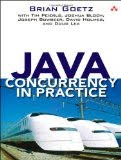Sometimes you have the situation that an issue is only occurring on certain machines or only at a certain time of day. There are a couple of possible methods to investigate such an issue (like: adding extra logging), however I would like to add an other one: remote debugging trough TCP/IP.
To do this, start your java program with the following jvm paramters:
-Xdebug -Xrunjdwp:transport=dt_socket,server=y,suspend=n,address=23334The meaning of the parameters is as follows:
server=y– this application will act as a TCP/IP server (“acceptor”) and wait for incoming connections rather than trying to connect to yoususpend=n– the server will not suspend on startup (alternatively you can set it to “y” in which case it will pause and wait for the debugger to connect – useful if you need to debug issues occurring at startup)address=23334– the port on which the debugger will listen. Keep in mind that only one program can listen on a given port on a machine and if the given port is not available, the given program will not start
After the program has started open your Eclipse, go to Debug configrations, Remote Java application, create a new entry and set "Host" to the machine name or IP and "Port" to 23334 (or whatever other port you've set up). Connect to it and off you go. The configuration steps for IntelliJ can be found here (I didn’t check it, but they seem right). A couple of final thoughts:
- If your sources are not in sync with the remote jars, you will see weird stuff (like breakpoints not triggering, triggering and the “wrong” line, etc), so you should make sure that you have the same sources as the jar does. If you still get into the situation where the sources are different from the classfiles, I found that setting breakpoints on "method entry" works as expected (ie. it breaks even if the method in the classfile is on a different line)
- You can "detach" from a certain process and it keeps running (and later on you can re-attach to it)
- This method is of low bandwidth / overhead, so it can be used to debug servers in remote locations
- Never, ever do this in production! unless you are absolutely, 100% certain that you know what you are doing.








